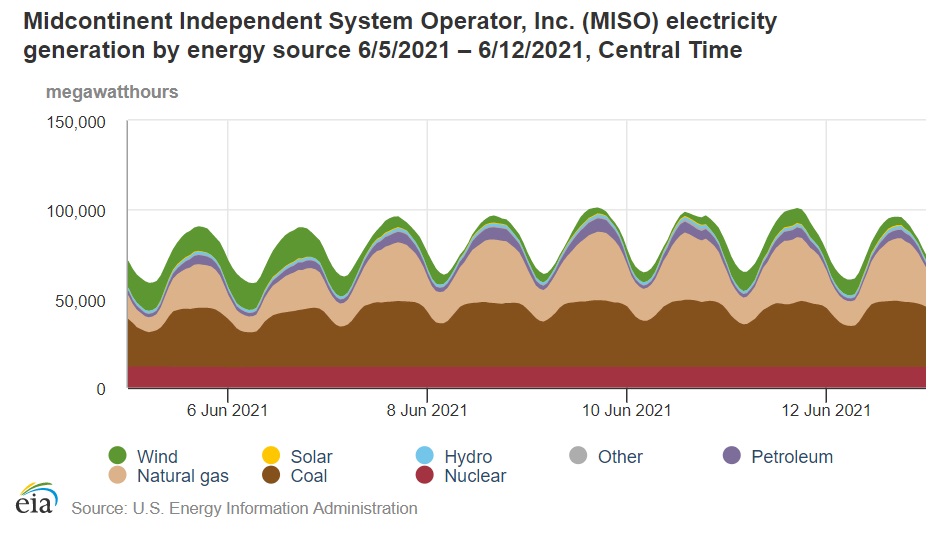Minnesota iron facilities forced to shut down due to electricity shortage
Last week, the regional electric grid operator, the Midcontinent Independent Systems Operator (MISO) declared an emergency, warning that the hot weather, unexpected power plant outages, and high demand was resulting in a shortage of electricity.
The electricity shortage got so bad that MISO was asking large electricity consumers to stop consuming electricity to keep the lights on for everyone else. The Mesabi Tribune reports that some Minnesota iron facilities were among those told to shut down production.
The paper wrote:
For the second time in five months, northeastern Minnesota taconite plants have had to cut back on electricity usage.
With unusual heat blanketing the midwest and high demand for electricity expected, the Midcontinent Independent System Operator (MISO) on Thursday asked large users across the midwest to reduce electrical consumption.
Northeastern Minnesota taconite plants idled processing equipment to help reduce electricity demand.
“We were notified by Minnesota Power that a temporary power reduction was needed to balance power requirements due to the hot weather,” Amanda Malkowski, United States Steel Corp. spokeswoman said. “We safely shed power by an orderly temporary idling of several Concentrator lines. The curtailment period has ended.”
Iron mines and paper mills use an enormous amount of electricity. In 2016, these facilities used 4.77 million megawatt-hours of electricity, which accounted for approximately 8 percent of the electricity generated in the entire state that year.
To help put this in perspective, just one iron mining facility, the MinnTac mine in Mountain Iron, reportedly uses more electricity and natural gas than the entire city of Minneapolis. Idling this facility is like turning the power off to the state’s largest city.
The Mesabi Tribune continues:
Anytime northeastern Minnesota taconite plants need to slow down puts a crimp in the production of iron ore pellets, the raw material used to make the nation’s steel.
Northeastern Minnesota taconite plants are the region’s largest users of electric power. The mines and processing plants operate 24 hours a day, 365 days a year.
With steel in high demand across the nation, the six taconite plants are in the midst of what’s shaping up to be what could be a record-setting year for iron ore pellet production.
It is vitally important for everyone to remember that in its most basic definition, energy is the ability to perform work.
If we don’t have enough energy — in this case, electricity — we can’t do the work. This leads to iron mining our facilities idling when they should be running full steam ahead to take advantage of record-high iron ore prices.

When facilities are shut down for too long because there is an electricity shortage, typically ten to twelve hours, workers get sent home. When workers who get paid hourly get sent home, they don’t get paid.
If these types of events are infrequent, then the impact it has on family budgets is limited. But these events are going to happen more often as liberal lawmakers try to shut down our reliable coal plants and try to depend upon great quantities of unreliable wind and solar power.
Last week, coal, natural gas and nuclear plants kept the lights on while wind and solar barely showed up to work. In fact, wind generation (in green below) fell off dramatically just as temperatures were rising, driving electricity demand to unexpected highs.
During some periods when the grid had the highest electricity demand, oil provided more electricity than wind and solar combined.

As the grid becomes more dependent upon unreliable wind and solar energy, large electricity consumers like Minnesota iron mines and paper mills, and other manufacturers throughout the entire state will be asked to shut down more often.
This means lost production and lost wages. Shutting down these facilities may be able to help shore up the grid in a pinch, but these actions should be desperate last-ditch efforts to keep the lights on, not a common occurrence.
Unfortunately, liberal wind and solar advocacy groups think this is a good thing. It’s up to us to pressure our lawmakers and the Public Utilities Commission (PUC) and tell them that we demand reliable energy because some of us have important work to do.